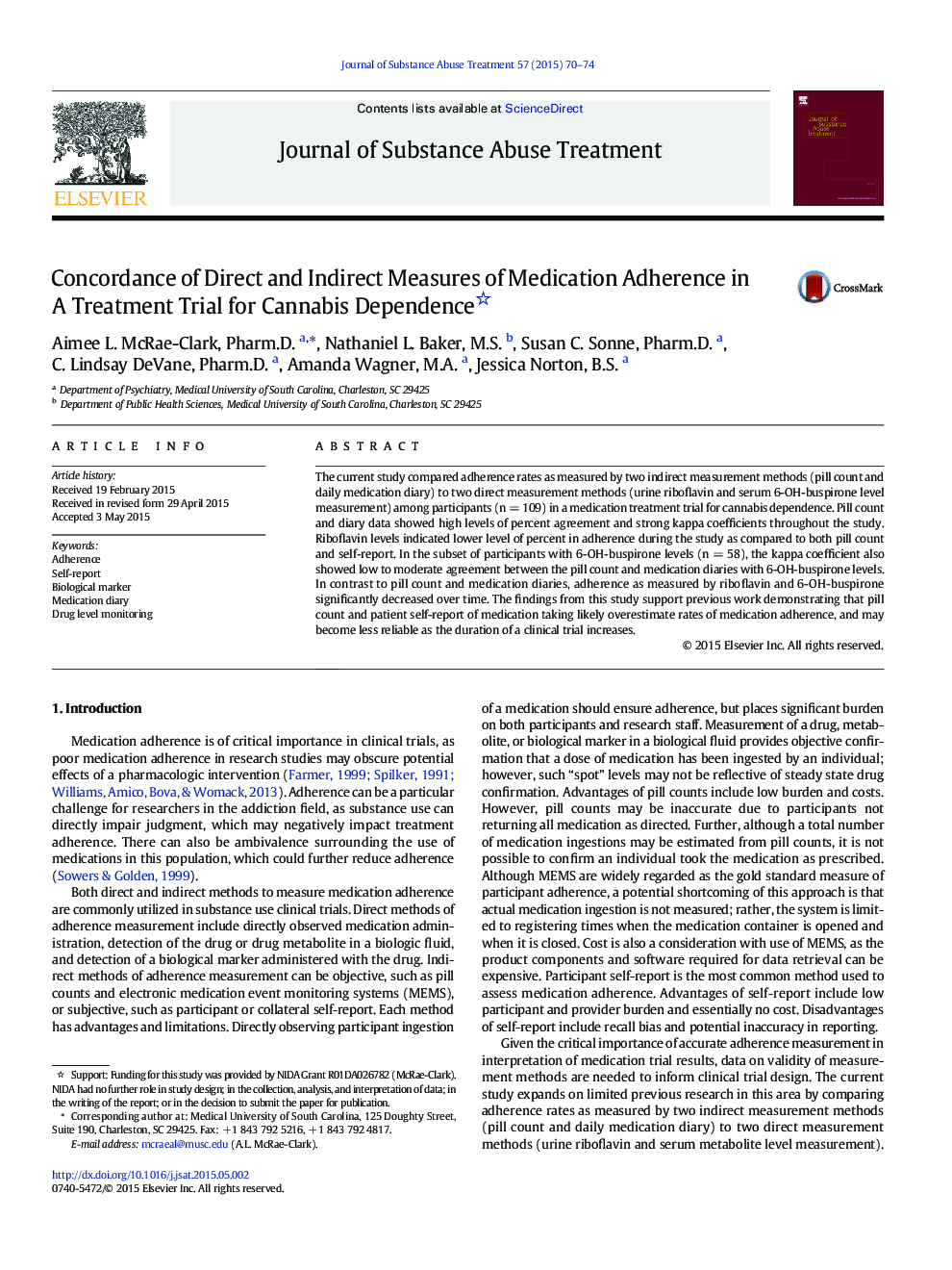| Article ID | Journal | Published Year | Pages | File Type |
|---|---|---|---|---|
| 6802483 | Journal of Substance Abuse Treatment | 2015 | 5 Pages |
Abstract
The current study compared adherence rates as measured by two indirect measurement methods (pill count and daily medication diary) to two direct measurement methods (urine riboflavin and serum 6-OH-buspirone level measurement) among participants (n = 109) in a medication treatment trial for cannabis dependence. Pill count and diary data showed high levels of percent agreement and strong kappa coefficients throughout the study. Riboflavin levels indicated lower level of percent in adherence during the study as compared to both pill count and self-report. In the subset of participants with 6-OH-buspirone levels (n = 58), the kappa coefficient also showed low to moderate agreement between the pill count and medication diaries with 6-OH-buspirone levels. In contrast to pill count and medication diaries, adherence as measured by riboflavin and 6-OH-buspirone significantly decreased over time. The findings from this study support previous work demonstrating that pill count and patient self-report of medication taking likely overestimate rates of medication adherence, and may become less reliable as the duration of a clinical trial increases.
Related Topics
Life Sciences
Neuroscience
Biological Psychiatry
Authors
Aimee L. Pharm.D., Nathaniel L. M.S., Susan C. Pharm.D., C. Lindsay Pharm.D., Amanda M.A., Jessica B.S.,
